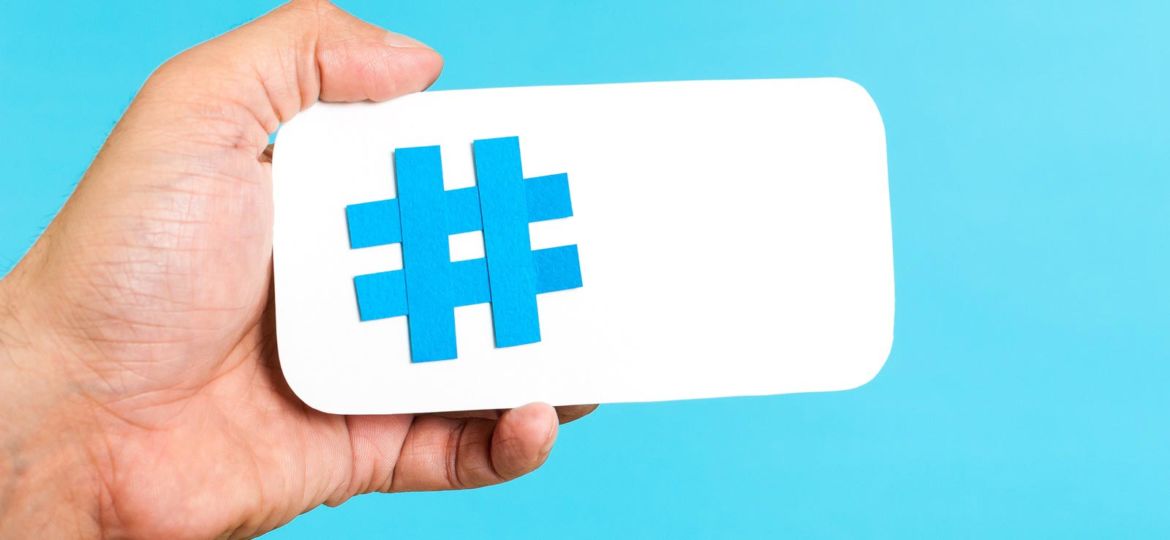
A hashtag is a type of label or metadata tag used on social network and microblogging services which makes it easier for users to find messages with a specific theme or content. Users create and use hashtags by placing thehash character (or pound sign) # in front of a word or unspaced phrase, either in the main text of a message or at the end. Searching for that hashtag will then present each message that has been tagged with it. A hashtag archive is consequently collected into a single stream under the same hashtag.[1]
Now there are a lot of ways in which you can use it. Using it in the right way so that you get the best results is key. For such purposes you can always create your own branded hashtag. Read on to see what Sprout Social has to say.
There isn’t necessarily a science behind the perfect hashtag, but there are best practices that can be applied when creating a branded hashtag.
When to Use a Branded Hashtag
Most often, a hashtag is made popular because of the event or idea it supported. Still, there are other ways that brands can use a hashtag to join in the conversation.
Create a branded hashtag for:
- Product launches
- Promotions
- Contests
- Sponsored Events
Brands can also join into existing conversations, where it makes sense, by using trending hashtags. This will help you gain exposure as people scroll through their feeds or search a keyword.
Hashtag Best Practices
Not all hashtags are created equal. Developing a branded hashtag is no easy task but there are best practices and guidelines that can be followed.
Create a Shortlist of Hashtag Options
As you’re brainstorming potential hashtag options, remain authentic. Be yourself. Draft a shortlist of hashtags that come naturally and appeal to your target audience. Find inspiration from listicles online and your brand’s existing social data.
Research Your Proposed Hashtags
Once your shortlist is solidified, it’s time to do your research. Search each hashtag and variations of each hashtag across all of the social networks your brand is active one. Your team can stay organized and track its findings with a shared, spreadsheet.
When applicable, localizing your hashtag is an easy way to stand out. Don’t forget to account for this during your research. Warren recently attended The Impact Event Denver. Before the seminar, he was researching hashtags and found that many combinations of the event’s name, including #TIE16, were accounted for. In order to break through the clutter, he revised the hashtag to include a “d” for Denver.
At the time of the seminar, only one Tweet was attributed to #TIED16, making it the perfect option to implement.
Know Your Goal
What are you using a branded hashtag for? What are you hoping to accomplish? While it’s important to set objectives, it’s important to remember that your goals will vary based on which type of hashtag campaign you decide to run.
If you’re holding a big event, you know that fans will be sharing content surrounding it on social. That’s why It’s important to try to pick a hashtag prior to the event. At Social Media Unicorn, we look at who’s coming to an event a week before it takes place. Then, we make sure that the hashtag we is consistent on all marketing materials, including attendee badges.
Promote Your Hashtag
Once you’ve decided on a hashtag, it’s time to start promoting it. Share your hashtag wherever it makes sense.
Depending on the type of hashtag your brand is using, you’ll want to promote it on:
- Slides during an event presentation
- Product label
- Facebook group
- Facebook Event
- Twitter bio
- Instagram bio
- Flyers, stickers or other promotional materials
Since hashtags are ingrained in our everyday life, there’s no need to overtly explain or preface its use.
Measure Your Results
Regardless of what you’re using your branded hashtag for, it’s important to use a social media management tool and set up parameters and brand keywords that allow you to track and measure the effectiveness of your campaign.
Warren shared #TIED16 with speakers and attendees before The Impact Event Denver took place. Three days before the conference, #TIED16 had already seen nearly 20 million impressions across multiple social channels.
